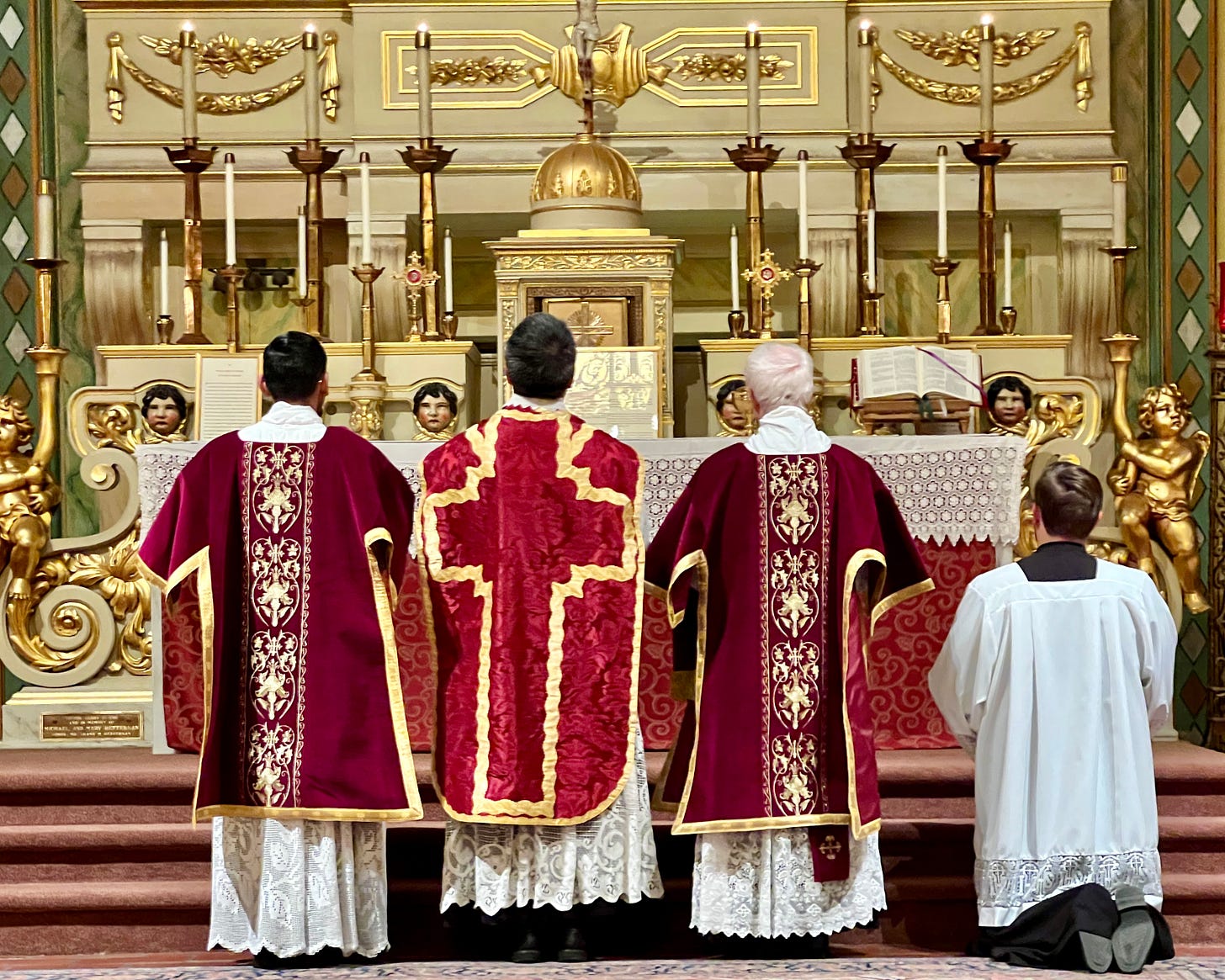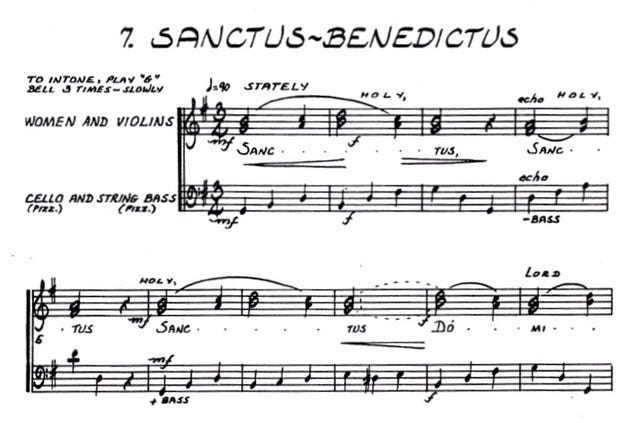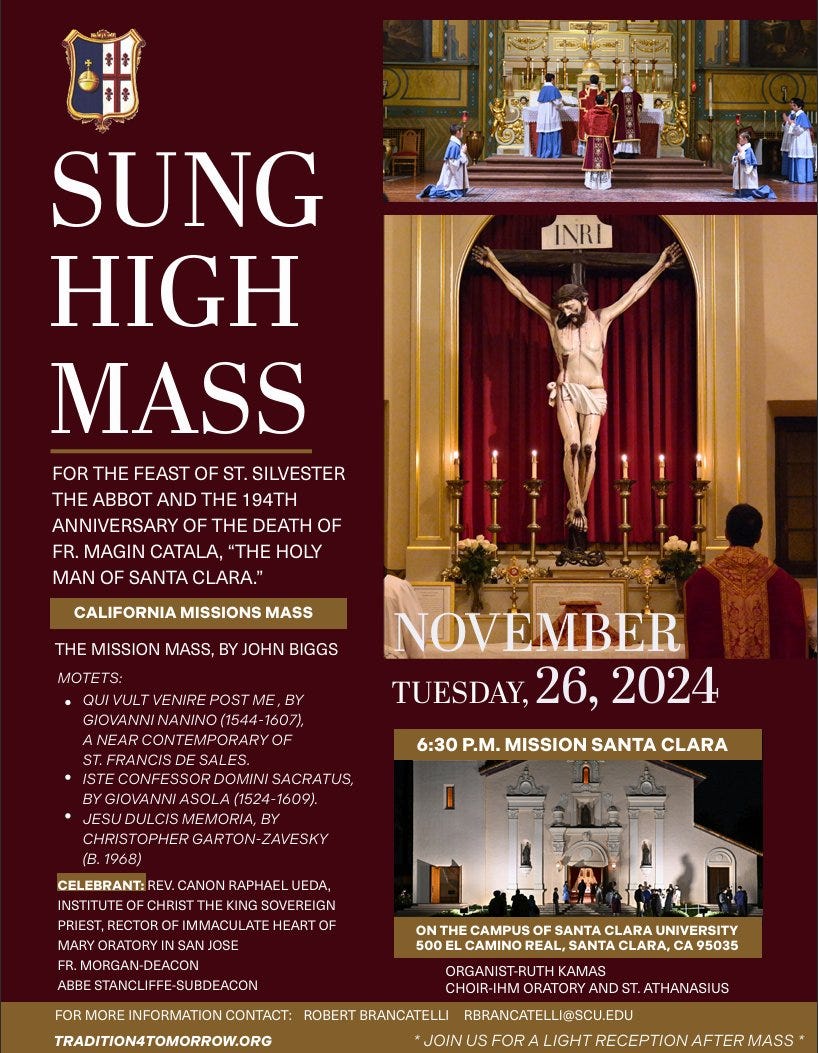In Honor of Padre Magin Catalá, Mission Mass Music Returned Again to Mission Santa Clara
`On the Santa Clara University Campus, devotees have gathered yearly since 2008 to commemorate the Holy Man of Santa Clara
This yearly Mass is a glimpse of the spiritual beauty and high culture that the one or two friars at each mission in 18th century California brought to the thousands of native Americans who were under their care, made possible by the missionaries’ prayers, sacrifices, patient teachings, and selfless labors.
Tuesday, November 26, 2025, at 6:30 PM, California Mission Mass music from the time of the Franciscan missionaries came back again to Mission Santa Clara.
Every year since 2008, a group of lay people with the assistance of priests from Institute of Christ the King Sovereign Priest has gathered to pray at the mission on a date as close as possible to November 22, the death anniversary of Padre Magin Catalá. Fr. Catalá labored at that mission for 36 years with loving care for the souls and bodies of the native Americans he served. The group gathers to commemorate him and to pray the diocesan-approved prayer for his canonization.
Fr. Catalá first came to Mission Santa Clara in 1796, 19 years after the mission was first founded by Saint Junipero Serra in 1777. One hundred and ninety-four years after his death in 1830, Fr. Catalá is still remembered and revered by many as the Holy Man of Santa Clara.
The reconstructed Mission Santa Clara Church serves as the chapel for Santa Clara University and is located on campus at the end of Palm Drive. The commemoration at the chapel first began in 2008 with a rosary procession from the then-nearby Mother of Perpetual Help Oratory. A year or two later, the group received permission from the Jesuits who manage SCU to celebrate Vespers there once a year. In 2013, they were first allowed to celebrate a low traditional Latin Mass (the only TLM permitted in the chapel all year), and in 2018, they were permitted a Solemn High Mass. A Solemn High Mass is now celebrated yearly at the high altar (which is mostly unused except for weddings), and a homily is given from the also mostly unused high pulpit that was recreated after a fire to resemble the pulpit used by Fr. Catala.
SCROLL DOWN FOR MORE
Father Catalá is not as well known as St. Junipero Serra, who founded and directed the California Missions, but according to contemporary eye-witness accounts, Fr. Catalá was a mystic, a miracle worker, an ascetic, an exorcist, a prophet, and an extraordinarily holy man.
A free-for-download 1909 book titled The Holy Man of Santa Clara documents the miraculous events of his life. The book records reports by several reliable witnesses (whose letters still can be viewed in the University of Santa Clara Library Archives). Some swore they saw Fr. Catalá levitate when he prayed in front of a crucifix and that the figure of Christ detached His hands from the cross and laid them on Fr. Catalá’s shoulders. That very same life-sized crucifix hangs over the side altar where the canonization prayer is recited after the Mass.
SCROLL DOWN FOR MORE
You can also read more about Father Catalá here:
In 1884, fifty-four years after he died, Fr. Catalá’s cause for canonization was taken up by Archbishop Alemany, the first bishop of San Francisco. Testimony about his life and virtue was submitted to Rome in 1909, but the cause for canonization of this worthy servant of God has stalled for the past 115 years.
The date scheduled for this year's commemoration fell on the feast of Saint Silvester, Abbot, in the traditional calendar. Two San José choirs, the Immaculate Heart of Mary Choir directed by Christopher Garton-Zavesky, and the St. Anathasius Choir, directed by Philipp Bumb, sang Gregorian Chants from the Common of an Abbot, in honor of St. Silvester. They also sang a polyphonic (many voiced) Mass setting titled the “California Mission Mass."
The “California Mission Mass” was arranged by California composer John Biggs from music originally written down by the Franciscan missionaries for the converted Native Americans to learn at the missions. Several of the Franciscan Missionaries, including Saint Junípero Serra, Fray Narciso Durán, Fathers José Viader, Felipe Arroyo de la Cuesta, and Estevan Tapís taught the natives how to sing chant and polyphony and play instruments during Masses.
Biggs selected various parts of the Mass from multiple settings that are archived at Mission Santa Barbara.
Kyrie from the Mission Mass (sung November 26, 2024):
Below is a snip from the Sanctus from the Mission Mass recorded in 2019.
Gloria from the Mission Mass (sung November 26, 2024). The camera pans around the church, showing the decorations and statues, the organ and the choir loft.
The combined choirs also sang several classical and contemporary pieces of polyphonic sacred music, including Giovanni Asola's Iste Confessor Domini Sacratus, Giovanni Nanino's Qui vult venire post me, and Christopher Garton-Zavesky's Jesu Dulcis Memoria. During the procession into the church, the choirs sang Steven Ottományi's arrangement of a Spanish hymn, Trisagio:
The combination of the traditional Solemn High Mass as it was celebrated by the Franciscan missionaries with polyphonic music that was sung by the converted native Americans at the spectacularly restored Mission Church makes for an unforgettable feast of spiritual and earthly beauty. This yearly Mass is a tribute to the beauty that was brought by one or two friars who labored alone at each mission to the thousands of native Americans who were under their care.










